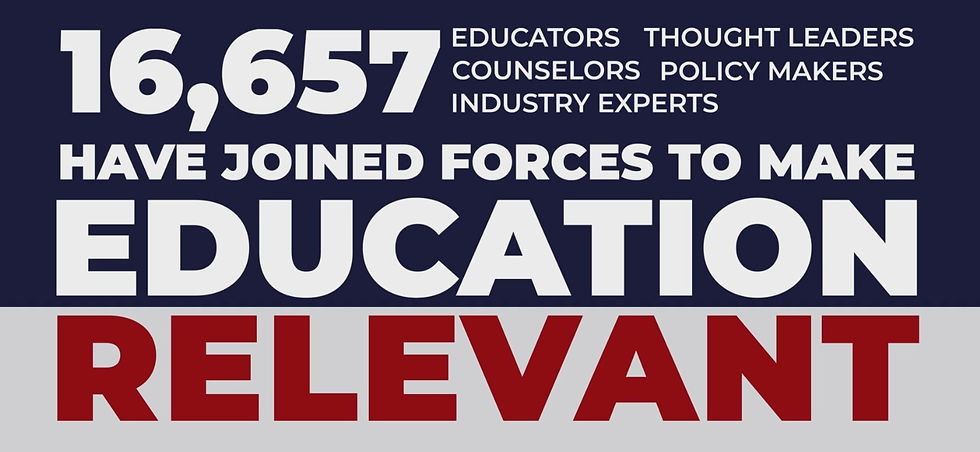What Is the HyFlex Approach to Professional Development?
- Emily Lam

- Jul 9
- 4 min read

In a world that’s constantly adapting to new technologies and shifting workplace norms, the way we approach learning and growth must evolve, too. Enter the Hybrid Flexible model—or HyFlex, for short. This is an approach to education and professional development that’s built on one core idea: flexibility without compromise.
But what does HyFlex actually mean in practice? And is it the right fit for professionals and students looking to grow their skills?
Let’s explore what the HyFlex model is and discuss key pros and cons to consider for both working professionals and students.
What is HyFlex Learning?
There are three common ways for students to learn: synchronous in-person, synchronous online, and asynchronous online. Simply put, the HyFlex model blends these three types of learning into one cohesive experience. Participants get to choose how they engage. They can attend a live session in person, tune in virtually at the same time, or access the session materials later at their own pace.
Crucially, all formats are designed to offer equivalent learning experiences.
No matter how a participant chooses to join, they still access the same content, assignments, discussions, and support.

What Works (and What to Watch For)
HyFlex learning has many advantages, but it may not be for everyone. Here’s a breakdown of some of its advantages as well as a few aspects to watch out for that can help you make an informed decision about whether HyFlex learning is right for you or someone you know.
Advantages of HyFlex learning for professionals
1. Flexibility that fits real life
The biggest advantage of HyFlex is in the name: flexibility.
For busy professionals juggling meetings, deadlines, and family life, HyFlex offers a chance to continue learning without sacrificing work or personal commitments - often without the time or cost of travel.
2. Learner choice = increased engagement
When people get to choose how they learn, they’re more likely to stay motivated.
HyFlex allows professionals to pick the format that works best for their learning style and schedule. This level of control over their own learning experience and the ability to learn however suits them best can increase overall productivity and help them finish what they start.
3. Scalable and inclusive
HyFlex programs can also serve a broader audience across different locations and time zones, making them ideal for organizations with distributed teams, varying schedules, and/or diverse learning needs.
4. Built-in resilience
Because HyFlex accommodates both in-person and virtual learners, it offers continuity in case of disruptions, such as travel issues, illness, or unexpected work conflicts.
What to watch for in HyFlex learning for professionals
1. Technology hurdles
To run smoothly, HyFlex requires strong tech infrastructure: reliable streaming, user-friendly platforms, and well-designed course materials. Dynamic speakers and trainers are a must! If any piece of that puzzle is weak, the experience can suffer.
2. Requires strong self-management for asynchronous learners
Asynchronous options are great for flexibility—but they also require discipline. Professionals who thrive on structure might struggle without real-time deadlines or interactions, especially if they choose to attend asynchronously, or are limited to asynchronous learning due to external factors like location or availability.
In other words, asynchronous learning requires learners to have an understanding of how they learn best and for their availability to match this format in order for learning to be optimized.
3. Uneven experience if poorly implemented
Courses must be designed with every format in mind from the start if they are to be effective. If a course (or masterclass) is designed by prioritizing one format and the others are only included as an afterthought, learners in the “secondary” formats may feel left out or underserved. True HyFlex success depends on thoughtful planning for all modalities.
What about for students?
While we are mainly talking about professional development for employees here, HyFlex is increasingly used in higher education as well for students—and the considerations are largely the same.
For students, HyFlex can:
Support diverse learning styles and life circumstances
Help students take ownership of their education
Allow for greater access (e.g., those with jobs, commutes, or caregiving duties can still participate)
But, just as with working professionals, it also:
Demands higher self-regulation
Risks disengagement if students fall behind asynchronously
Relies heavily on dynamic instructors being trained and supported in this model
How Catapult is Here to Help
Through hybrid-flexible learning, dynamic speakers, follow-up coaching, and collaborative planning, Catapult is revolutionizing the way educators and workforce development professionals engage in professional development. By utilizing a flexible, personalized, collaborative approach to the unique needs of the individuals and communities we serve, we are committed to moving the educational landscape toward a world where all education is relevant.

Final Thoughts
The HyFlex approach to professional development isn’t just a reaction to post pandemic disruption—it’s a long-term shift toward more adaptive, personalized, learner-centered education. For professionals and students alike, it can provide autonomy, accessibility, and resilience—and it works best when paired with thoughtful design, strong facilitation, and reliable technology.
HyFlex is ideal for institutions wanting to provide high-quality PD for theri entire organization - at an affordable investment. HyFlex is also ideal for learners/employees who want to modernize their PD experience and achieve personal growth in an environment that meets them where they already are.
Does this sound like you? Explore Catapult’s flexible programs to experience professional development that fits your life—anywhere, anytime.

Comments